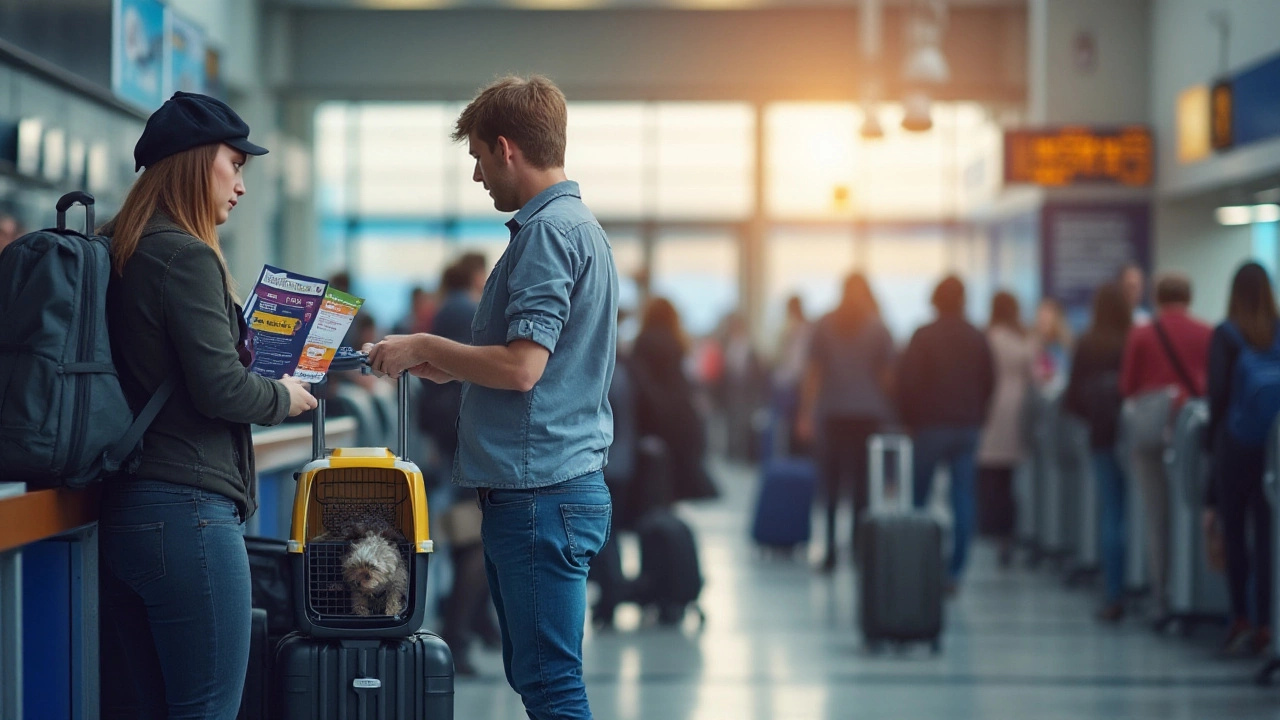Airline Restrictions for Dogs: What You Need to Know
Planning to fly with your dog? Most people think it’s just about buying a ticket, but airlines have a whole set of rules that can catch you off guard. From the size of the carrier to the paperwork you need, understanding these restrictions before you book saves time, money, and stress for both you and your pet.
Understanding Common Airline Policies
Every airline has its own definition of what counts as a “small” or “large” dog. Generally, dogs under 15‑20 pounds can travel in the cabin if their carrier fits under the seat, while larger dogs must go in the cargo hold. The carrier itself must be sturdy, well‑ventilated, and meet exact dimensions – usually something like 18" L × 11" W × 11" H. If you ignore these limits, you might be denied boarding or forced to pay a hefty re‑booking fee.
Besides size, most airlines demand a recent health certificate (often within 10 days of travel) signed by a vet. This document proves your dog is fit to fly and up‑to‑date on vaccinations. Some carriers also require a pet passport for international trips, which includes microchip details and rabies proof. Forgetting any of these papers can result in a denied boarding or quarantine, so keep them in a dedicated folder you can pull out at the check‑in desk.
How to Prepare Your Dog for a Smooth Flight
Start by getting your dog used to the travel carrier weeks before the trip. Place a comfy blanket, a favorite chew toy, and a small amount of your dog’s regular treat inside. Let them explore it freely, and gradually increase the time they spend inside. This simple step reduces anxiety on the day of travel and keeps them calm during the flight.
On the day of departure, avoid feeding a large meal right before the flight – a light snack a few hours earlier is enough. This helps prevent an upset stomach and reduces the need for bathroom breaks. Offer water up until you board, then limit fluid intake after you’re settled. If you’re flying in cargo, place a absorbent pad in the carrier and make sure the crate is clearly labeled “Live Animal – Handle With Care”.
Finally, be aware of hidden fees. Airlines often charge a flat pet fee for cabin travel (usually £70‑£120) and a higher fee for cargo, plus extra charges for oversized carriers. Some low‑cost carriers don’t allow pets at all, so double‑check the airline’s pet policy before you click “buy”. Knowing the exact cost up front helps you budget and avoids surprise charges at the airport.
By mastering these airline restrictions – carrier size, health paperwork, and fee structure – you turn a potentially stressful trip into a smooth adventure for both you and your dog. Pack the right carrier, bring the necessary documents, and keep your pup comfortable with familiar treats. With a little preparation, you’ll both be ready to enjoy the skies without a hitch.

Top Airlines with Pet Travel Restrictions
Traveling with pets can be a complex process, especially when it involves flying. While some airlines are pet-friendly, many have strict policies on furry companions in the cabin. Understanding which airlines do not allow pets is crucial to planning your journey smoothly. This article provides detailed information on pet restrictions across various airlines, offering practical tips for travelers accompanied by their four-legged friends.
View more